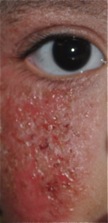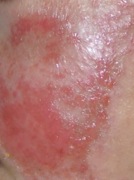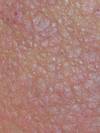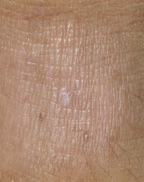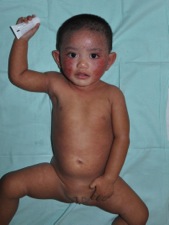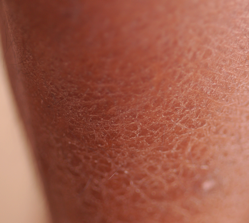Eczema / Atopic Eczema / Seborrheic Eczema
By Dr Leong Kin Fon
Paediatric Dermatologist
MRCPCH (Edinburgh), MBBS (UM)
GHKL
What is eczema?
Eczema is an itchy inflammation of the skin.
The words eczema and dermatitis are interchangeable and mean the same thing.
The appearance of eczema differs from one individual to the next; it can also differ from one occurrence to another.
Most people have acute flare-ups with inflamed, red, and sometimes blistered and weepy patches. In between flare-ups, the skin may appear normal during the early stage of the disease. It may also appear as the dry, thickened and pigmented later stage of chronic eczema.
One of the most consistent features of eczema is itchiness.
Excessive itching and scratching will cause inflammation, infection and interrupted sleep. Having uncontrolled eczema is akin to being “pricked by 1,000 female mosquitoes at the same time, and not knowing where to start scratching”. Psychosocial disturbance becomes inevitable.
What is the underlying cause of eczema?
Eczema is not contagious! It is caused by endogenous (genetic) or exogenous (environmental) stimuli.
Examples of endogenous eczema are atopic eczema, seborrheic eczema and discoid eczema.
Examples of exogenous eczema include contact allergic eczema (nickel/perfumes) or contact irritant eczema (soap/detergent).
What is atopic eczema?
It is a form of endogenous eczema.
Atopic is a term used to describe the tendency to develop allergic conditions such as eczema, asthma, seasonal rhinitis and hay fever, which often have a genetic basis
Eczema is a term that describe changes in the upper layer of the skin, which includes redness, blistering, oozing, crusting, scaling, thickening and, sometimes, pigmentation.
Atopic eczema has six main features:
- Dryness of skin due to underlying skin barrier defects.
- Itch-scratch cycle.
- Redness of skin due to inflammation. It may affect any area of the skin, but typically appears on the face, arms and periodically behind the knees.
- Onset at an early age (usually < 5 year old) and runs a chronic relapsing clinical course for years.
- Family or personal history of allergic diseases (atopic eczema, allergic rhinitis and asthma)
- The environment acts as a trigger in most cases.
What causes atopic eczema?
The cause of atopic eczema is still unknown, but may result from dynamic interaction between inherited tendencies of sensitive skin, an immature immune system and environmental triggers.
Genetic (Endogenous)
Atopic eczema tends to run in families. If one or both parents suffer from eczema, it is thus more likely that their children will suffer from it too, although the condition is not always passed directly from parent to child. In a family with one allergic parent, the risk of the child developing an allergic disease is about 20 to 40 per cent. The risk increases to 60 to 80 per cent if both parents are affected. Such findings support the theory that atopic eczema is genetic.
Environmental (Exogenous)
Atopic eczema has become more common in recent years, especially among urban communities. Genetics alone cannot explain the rapid upsurge of atopic eczema cases.
The prevalence of atopic eczema among primary school children in Malaysia increased from 9.5 per cent in 1995 to 12.6 per cent in 2001. In Singapore, it affects about 20 per cent of primary school children.
Environmental factors which may play a role in causing atopic eczema include the “BIG 6”
- Changes in climate – dry, cold winter or hot, humid summer.
- Prolonged contact with sweat after exercise or hot weather.
- Long, hot baths with harsh cleansers.
- High bacteria load on skin.
- House dust mites.
- Certain foods (in younger children): eggs, soy, cow’s milk, wheat and shellfish.
The role of these external factors is dynamic and varies with age, climate and lifestyle.
A common first reaction to atopic eczema is to blame the food. In fact, only about five to 10 per cent of eczema cases in children under five years old is caused by food allergy, albeit not directly.
Some parents substitute cow’s milk with goat’s milk, and then soy-based milk, but still do not get satisfactory results. They get frustrated and begin to think the eczema is caused by house dust or bacteria, and end up shopping for a “miracle” cream or injection to cure the condition.
Understanding that atopic eczema is a multifactorial conditon will prevent parents from spending hundreds of dollars on a long list of irrelevant allergic tests. Many have the misconception that atopic eczema is due to a single cause, and that identification and avoidance of that single causative factor is the cure. Practically, only a subgroup of patients with atopic eczema may benefit from allergy testing. Consult your doctor for further info.
What are the common complications among atopic eczema sufferers?
- Severe itch
Itching can be severe and scratching the rash makes it even itchier, causing more inflammation. Once the skin barrier is broken, it can become infected by bacteria, especially the Staphylococcus aureus, which commonly lives on the skin. In addition to the intense discomfort, sufferers also endure a huge psychosocial impact, such as the reluctance of being seen in public, interrupted sleep and more.
2. Secondary Infection – bacterial, fungal and viral.
3. Higher risk of food allergy, asthma and allergic rhinitis.
4. Psychosocial and emotional burdens.
5. Malnutrition due to unguided self-imposed food restrictions.
How can atopic eczema be treated?
Treatment for atopic eczema is aimed at reducing inflammation, relieving itch and preventing future flare-ups.
An important component in managing atopic eczema is to break the itch–scratch– inflammation – infection cycle.
1. Combination approach:
- Moisturiser and cleanser
- Steroids and friends
- Antihistamines and wet wrap
- Antibiotic and antiseptic
- Modification of triggering factors
- Education
2 .Family based approach that involves both patients and caretakers.
3. Counseling about the disease, its triggers, treatment and long term prognosis.
4. Empowering the patients and caretakers to apply home therapy during acute flare-ups.
Moisturisers and mild cleansers
An optimal shower package includes an ideal moisturiser and a cleanser. It is pointless to select a good moisturiser that improves the skin barrier function on one hand, but a harsh cleanser that disrupts your skin barrier and pH on the other.
Moisturisers should be applied regularly and frequently to help the outer layer of your skin function as a barrier to the environment. The dryer your skin, the more frequently you should moisturise.
There are many moisturisers available in the market, all varying in their degree of greasiness. It is important that you choose one you like and which is cost effective.
An ideal combination of moisturisers and cleansers for atopic eczema:
- Replaces and repairs the skin barrier function.
- Hypoallergenic
- Contains anti-itch , anti-inflammatory and antiseptic effects.
- Cost effective (20g per application on an adult, ~60g/day or ~2kg/month )
Topical steroid creams or ointments
Steroid creams have anti-inflammatory effects and will usually relieve the redness and itch of your eczema. Steroid creams come in different strengths (mild, moderately-potent, potent and very potent) and are very safe as long as they are used correctly.
Weaker topical steroids (Hydrocortisone and Clobetasone) should be used where the skin is particularly thin, such as on the face, eyelids and armpits: stronger steroids (Mometasone, Fluticasone) can be used where the skin is thicker, such as palms, soles and limbs.
Used inappropriately (too strong or for too long), topical steroids may cause side effects, including thinning of the skin. Your doctor will prescribe the right strength to settle a flare-up and and reducing their strength once things have improved either gradually for “stubborn” eczema or abruptly for sites with infrequent eczema.
Topical Calcineurin inhibitors (Steroid sparing cream)
Some people with atopic eczema find calcineurin inhibitors, i.e., tacrolimus ointment and pimecrolimus cream effective in reducing inflammation. They are not steroids and thus do not thin the skin after prolonged usage. Hence, it is helpful for patients with steroid phobia or on skin that has suffered from thinning.
The commonest side effect is a stinging upon application, which quickly disappears. This prescription-only medication is approved for children above the age of two and adults.
Antibiotics and antiseptics
If your eczema becomes painful, wet and crusty, it may be infected and a course of topical or oral antibiotics is needed.
Antiseptic baths (sodium hypochlorite/triclosan), when applied to the skin alone can be very helpful in reducing the density of bacteria, although a possible side effect is that they may irritate the skin. Hence, correct concentration, duration and frequency of antiseptic baths are important .
Anti Itch Measures
Sedative antihistamines (such as chlorphiramine and hydroxyzine) can help cause drowsiness, indirectly reducing the itch-scratch cycle, but are less effective in the long term.
Combination of wet wrap therapy, behavioural modification (Itch–tap cycle) or cold compress are other measures to break the itch-scratch cycle.
Other treatment options for severe and resistant cases include:
1. Oral steroids
Sometimes used for a short time ( two to four weeks) if the eczema has flared
badly: they work well but should not be used in the long term because of the
risk of side effects.
2. Azathioprine
3. Ciclosporin
4. Narrow band UVB therapy (two to three times per week)
Can atopic eczema be cured?
No, it cannot be cured, but there are many ways of controlling it.
Most children with atopic eczema improve as they get older. About 2/3 of sufferers are cleared of the condtion by the age of 16, but many continue to have dry skin. Hence, they still need to avoid irritants such as harsh soaps.
What is infantile seborrheic eczema or cradle cap?
Cradle cap is a patchy, greasy, scaly and crusty skin rash that occurs on the scalp of recently born babies. Cradle cap is infantile seborrhoeic dermatitis usually confined to the scalp. It may also affect other areas of the body such as behind the ears, in the creases of the neck, armpits and diaper area.
Like atopic eczema , infantile seborrheic eczema is a form of endogenous eczema. The main differences are:
| Seborrheic eczema | Atopic eczema | |
| Age of onset | < 3 months old | > 3 months old |
| Itch | Minimal | Severe and intense |
| Sleep pattern | Usually undisturbed | Disturbed sleep |
| Location | Scalp, groin and armpit | Groin usually spared |
| Clinical course | Usually resolved by six months | Chronic relapsing for years |
What causes seborrheic eczema?
- The underlying cause of cradle cap is still unknown but it is not contagious.
- It may be due to the maternal hormones that pass to the baby before birth. These hormones cause an abnormal overproduction of oil in the oil glands and hair follicles.
- Another potential trigger is a fungus called Malassezia that grows in the sebum.
What are the complications of infantile seborrheic dermatitis?
Even though cradle cap is self-limiting , it can be alarming for parents and causes significant emotional burden on them especially when their infant has an overly thick scaly scalp.
What is the treatment for infantile seborrheic eczema?
Infantile seborrheic eczema usually doesn’t require medical treatment as it clears up on its own within six months of age. Frequent reassurance that the condition is not serious and will disappear on its own in good time is very important for the parents of the infant. In the meantime, wash your baby’s hair once a day with mild baby shampoo followed by frequent conditioning.
If the redness is prominent, applying a hydrocortisone cream (1%) for one to two weeks will help reduce its inflammation. Using a topical ketoconazole shampoo twice weekly for four to six weeks may be helpful in severe cases.







